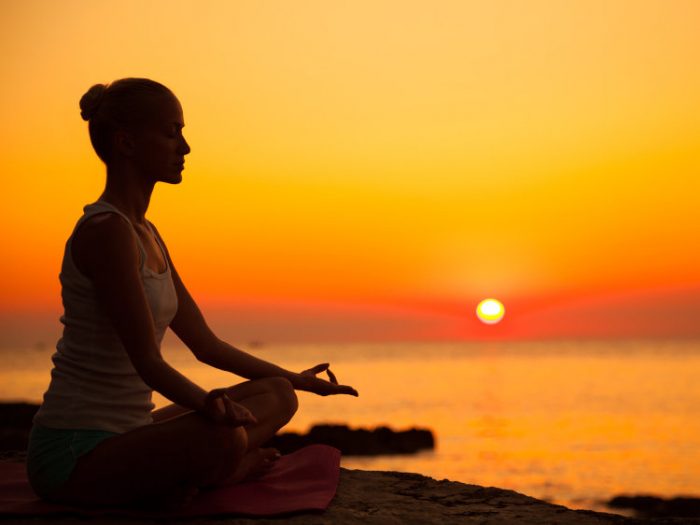5 Ways to add Mindfulness in your daily routine
When life runs on a tight schedule and gets extremely busy, then you may find yourself ignoring to take care of yourself. Relaxation may be the last point on your priority list. It is important to find out ways to fit relaxation into your busy schedule. Allowing yourself to practice self-care is extremely important to balance your individual and professional life.
If you start calculating how much time you spend each day in simple, mundane activities like office gossip, fixing unnecessary things, our daily routine activities and more, you will notice that you spend quite a good amount of time on non-productive activities. Study shows that we spend almost 85 minutes per day on non-productive activities.
How about transforming these non-productive 85 minutes into highly productive time? Wouldn’t it be nice? The transforming technique is known as “Mindfulness”. You can perform this activity just by changing your subtle inner perspective.
According to Marsha Lucas, the author of “Rewire Your Brain for Love”, “Mindfulness is paying complete attention in a particular way: on purpose, in the present moment and non-judgmentally.” Practicing mindfulness for just a few minutes at different times during the day can be helpful to improve your personal and professional performance.
There are simple ways you can practice mindfulness techniques. Here are a few tips that can help you to incorporate mindfulness technique with your daily routine : –
- Mindfulness Wake-up – Normally, we act in unintended ways. It happens due to the disconnection between the unconscious impulses of the lower-brain which responds faster and conscious, wiser abilities of the higher centers which responds slow. To add mindfulness, you need to set an intention for your waking up time. Dr. Lucas said, “Mindfulness practice as the first thing in the morning helps to set the ‘tone’ of your nervous system for the rest of the day, increasing the likelihood of other mindful moments.” On wake-up, sit in a relaxed posture, close your eyes and connect with the sensations of your seated body. Keep your spine straight but not too tight. Take three long, deep breaths. When you are breathing in rhythm, ask yourself: What is my intention for today? And set the intention for the day and check it with self at the regular interval throughout the day. When you start practicing this technique, you will notice that your responses have changed.
- Mindful Work-out – No matter what work-out discipline you follow. Either riding a bike, lifting weights, or yoga practice. It can be mindful practice. Instead of burning out the calories, develop it as a mindful skill. You can breathe and move in a way that it will shift your intention from being busy to relax and from distracted to focus. While you work-out, bring the purpose to your activity by consciously guiding your work-out session. Give 5 minutes to warm-up yourself consciously. For example, try to match the rhythm of your breathing to your movement. When you move rhythmically, it will activate your brain, and align your heart rate and nervous system. Increase the intensity of your movement without losing the rhythm. Challenge your limit with increasing intensity of your movements in slowly manners so you can remain conscious during the entire activity. At last, consciously recognize the sensations flowing inside you. The key point is to remain conscious during the entire activity.
- Mindful Relax – Study shows that 95% of our behavior comes from our impulses not from our conscious brain because our neural network resides under our habits and we react instantly rather than acting responsive. Mindfulness is the exact opposite of these processes, it slows our brain initially. It puts an executive control on action rather than being an autopilot or pre-programmed. You need to refresh your triggers regularly and shift your balance to slow brain to make it more responsive in place of your fast-brain. It enables responsive action, willpower and rewiring the decision making patterns. So, create mindful pause in your activities to relax with deep, long breathing and rewire the responsive patterns before reacting on something.
- Mindful Eating – We all have followed the diet chart and followed the dieting routine. Now, eat consciously. What do I mean? Ask yourself: Do I watch myself while eating? Eating is one of the most pleasurable activities for human beings. But, if we do it mindfully, it can be turned into a spiritual experience. When we bring our full attention to our eating, then we will feed only required amount of food. Take three long, deep breaths and listen to you body i.e. become aware to the physical sensation in your belly. Always eat according to your hunger and practice peacefully eating. You need to focus on chewing not on swallowing it. Slow down and breathe deeply while you eat. You will notice that your eating is peaceful and healthy.
- Mindful Waiting – In our busy life schedule, waiting is a big source of frustration – whether you are waiting in queue to get something done or stuck in traffic. We trigger ourselves into the “fight or flight” response. But the situation which is frustrating for others, waiting is actually an opportunity for mindfulness. Bring your complete attention to your breath. Concentrate on the flow of your breath in and out of the body from moment to moment. And apart from your breathing, allow everything just to be even if there is impatience or irritation.
Dr. Halliwell said that the best way to cultivate mindfulness in everyday life is to formally get practice in meditation. So, practicing mindfulness is like learning a new language. For example – you can’t decide to be fluent in a language unless you learn the language. Similarly, you can’t be an expert in being mindful in your daily life unless you learn it and practice the technique. So, practicing meditation is to learn the language of mindfulness. So, developing mindfulness in our daily routine is similar to cultivating a new lifestyle of living. It is a practice to train your brain to be more efficient and more conscious. Mindfulness helps our brain to be more integrated with our body so that our everyday activities, thoughts, attitudes and perception will be more balanced.
You can start learning mindfulness meditation techniques by reading and watching online. But you need to consult an expert before practicing it deeply. Yoga Studios like Gyan Yog Breath have meditation experts which help the learner to understand its deep concepts and philosophy before practicing it. Their yoga teacher training modules also consists of the part of mindfulness meditation techniques to train new yoga teachers to this wonderful practice and add it in their daily routine during their yoga teacher training period.
References
Books
1. Mindfulness: An Eight-Week Plan for Finding Peace in a Frantic World by Mark Williams (Author), Danny Penman (Author), Jon Kabat-Zinn Ph.D. (Foreword)
2. Mindfulness For Health: A Practical Guide To Relieving Pain, Reducing Stress And Restoring Wellbeing by Vidyamala Burch;Dr Danny Penman (Author)
Websites
https://www.mindful.org/take-a-mindful-moment-5-simple-practices-for-daily-life/
https://kellyfeatheringham.com/5-ways-to-find-time-in-busy-schedule/
https://www.success.com/how-to-make-mindfulness-part-of-your-daily-routine/
https://mrsmindfulness.com/11-ways-to-bring-more-mindfulness-into-your-life-today/

 Share on bsky
Share on bsky





Read 1 comment and reply